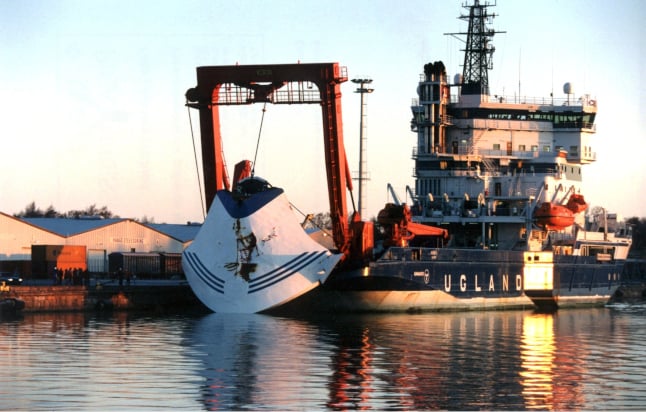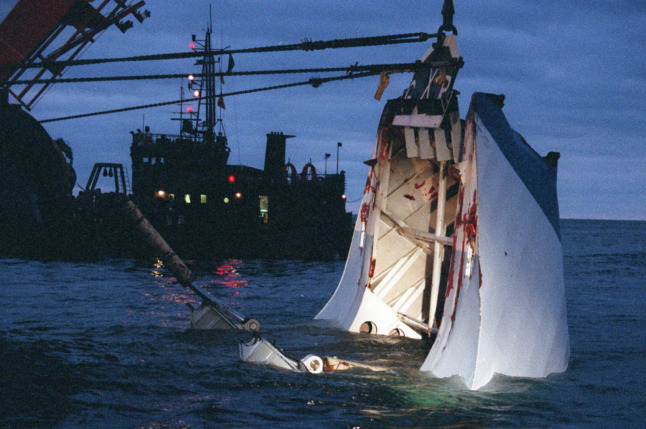A faulty bow door rather than a blast or collision caused the 1994 sinking of the Estonia ferry that killed 852 people, investigators said on Monday, dismissing questions raised by a 2020 documentary.
The preliminary findings of a fresh probe opened in 2021 by Estonian, Finnish and Swedish authorities reinforce the conclusions of the official 1997 inquiry.
That report found that the disaster in the Baltic Sea was caused by the bow door of the ship being wrenched open in heavy seas, allowing water to gush into the car deck.
The new investigation came to the same conclusion, saying the ferry was not seaworthy due to the faulty bow visor and should not have been authorised to sail.
If a proper inspection of the bow had been carried out, “the flaws of the visor construction could have been discovered, and the accident would probably not have occurred”, the report presented on Monday said.
Only 137 people survived the sinking of the Tallinn-to-Stockholm ferry which went down in just an hour on September 28, 1994, in one of the 20th century’s worst maritime disasters.
A documentary that aired in 2020 cast doubt on the findings of the official 1997 investigation.
The documentary sent divers down to film the wreck, revealing a massive hole in the hull, among other things.
Experts also said in the documentary that only a massive external force could rupture the bow door, raising questions about what really happened.
“Based on the evidence gathered so far, there is no indication of an explosion in the bow area”, and “no indication of a collision with a vessel or a floating object”, the report concluded.
The so-called “Intermediate Report of the Preliminary Assessment” presented on Monday concluded the hole in the hull was likely caused by the ship hitting the seabed.
“The location of the outcropping bedrock under the hull matches the location of the deformation on the hull,” it said.
Survivors and relatives of the dead have fought for over two decades for a fuller investigation amid official reluctance to reconsider the causes.
The documentary’s director and a deep-sea analyst, both Swedes, have been found guilty of violating the sanctity of the site, designated a final resting place in 1995 by Sweden, Estonia and Finland.
Laws banning dives to the site were amended in 2021 to allow a re-examination of the wreck following the documentary.



 Please whitelist us to continue reading.
Please whitelist us to continue reading.
Member comments